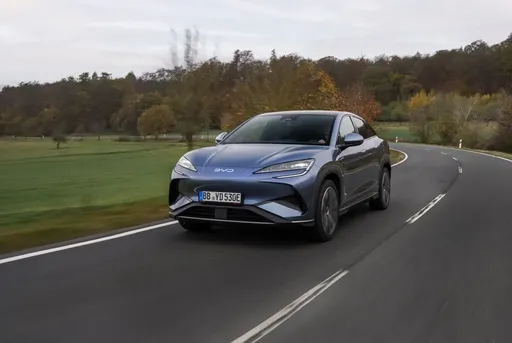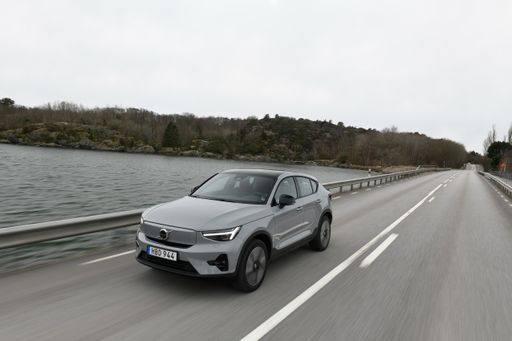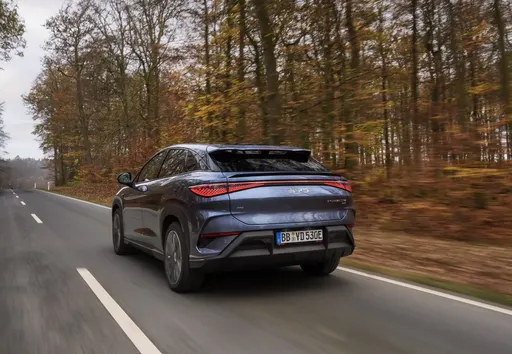Volvo EC40 vs BYD Sealion 7 – Performance, range & efficiency compared
Everyday use, family trips or long-distance drives – here’s where the differences show.
Discover whether Volvo EC40 or BYD Sealion 7 fits your lifestyle better.
Costs and Efficiency:
Price and efficiency are key factors when choosing a car – and this is often where the real differences emerge.
BYD Sealion 7 has a minimal advantage in terms of price – it starts at 42800 £, while the Volvo EC40 costs 46600 £. That’s a price difference of around 3772 £.
In terms of energy consumption, the advantage goes to the Volvo EC40: with 16.20 kWh per 100 km, it’s noticeable more efficient than the BYD Sealion 7 with 19.90 kWh. That’s a difference of about 3.70 kWh.
As for range, the Volvo EC40 performs somewhat better – achieving up to 584 km, about 82 km more than the BYD Sealion 7.
Engine and Performance:
Power, torque and acceleration say a lot about how a car feels on the road. This is where you see which model delivers more driving dynamics.
When it comes to engine power, the BYD Sealion 7 has a somewhat edge – offering 530 HP compared to 442 HP. That’s roughly 88 HP more horsepower.
In acceleration from 0 to 100 km/h, the BYD Sealion 7 is slight quicker – completing the sprint in 4.50 s, while the Volvo EC40 takes 4.60 s. That’s about 0.10 s faster.
In terms of top speed, the BYD Sealion 7 performs slightly better – reaching 215 km/h, while the Volvo EC40 tops out at 180 km/h. The difference is around 35 km/h.
There’s also a difference in torque: BYD Sealion 7 pulls barely noticeable stronger with 690 Nm compared to 670 Nm. That’s about 20 Nm difference.
Space and Everyday Use:
Cabin size, boot volume and payload all play a role in everyday practicality. Here, comfort and flexibility make the difference.
Both vehicles offer seating for 5 people.
In curb weight, Volvo EC40 is barely noticeable lighter – 2065 kg compared to 2225 kg. The difference is around 160 kg.
In terms of boot space, the BYD Sealion 7 offers clearly perceptible more room – 520 L compared to 404 L. That’s a difference of about 116 L.
In maximum load capacity, the BYD Sealion 7 performs noticeable better – up to 1789 L, which is about 593 L more than the Volvo EC40.
When it comes to payload, Volvo EC40 barely noticeable takes the win – 435 kg compared to 410 kg. That’s a difference of about 25 kg.
Who wins the race?
The BYD Sealion 7 proves to be leaves the rival little chance and therefore becomes our DriveDuel Champion!
BYD Sealion 7 is the better all-rounder in this comparison.

BYD Sealion 7
Volvo EC40
The Volvo EC40 seamlessly combines cutting-edge technology with sleek Scandinavian design, offering a refined driving experience. With its advanced safety features and user-friendly infotainment system, this model caters to both seasoned drivers and modern tech enthusiasts. The vehicle's impressive efficiency and environmentally conscious engineering make it a standout choice for those seeking sustainability without compromising on style.
details @ media.volvocars.com
@ media.volvocars.com
BYD Sealion 7
The Sealion 7 captivates with its striking design and impressive performance that appeals to both enthusiasts and casual drivers alike. With a focus on comfort and advanced technology, this model redefines the driving experience, making every journey enjoyable. Its sleek silhouette coupled with an innovative interior showcases the perfect blend of style and functionality.
details @ BYD
@ BYD
 @ BYD
@ BYD
 @ BYD
@ BYD

|

|
|
|
|
Costs and Consumption |
|
|---|---|
|
Price
46600 - 59000 £
|
Price
42800 - 52300 £
|
|
Consumption L/100km
-
|
Consumption L/100km
-
|
|
Consumption kWh/100km
16.2 - 17.3 kWh
|
Consumption kWh/100km
19.9 - 21.9 kWh
|
|
Electric Range
488 - 584 km
|
Electric Range
456 - 502 km
|
|
Battery Capacity
67 - 79 kWh
|
Battery Capacity
-
|
|
co2
0 g/km
|
co2
0 g/km
|
|
Fuel tank capacity
-
|
Fuel tank capacity
-
|
Dimensions and Body |
|
|---|---|
|
Body Type
SUV
|
Body Type
SUV
|
|
Seats
5
|
Seats
5
|
|
Doors
5
|
Doors
4
|
|
Curb weight
2065 - 2185 kg
|
Curb weight
2225 - 2435 kg
|
|
Trunk capacity
404 L
|
Trunk capacity
520 L
|
|
Length
4440 mm
|
Length
4830 mm
|
|
Width
1873 mm
|
Width
1925 mm
|
|
Height
1591 mm
|
Height
1620 mm
|
|
Max trunk capacity
1196 L
|
Max trunk capacity
1789 L
|
|
Payload
395 - 435 kg
|
Payload
410 kg
|
Engine and Performance |
|
|---|---|
|
Engine Type
Electric
|
Engine Type
Electric
|
|
Transmission
Automatic
|
Transmission
Automatic
|
|
Transmission Detail
Reduction Gearbox
|
Transmission Detail
Reduction Gearbox
|
|
Drive Type
Rear-Wheel Drive, All-Wheel Drive
|
Drive Type
Rear-Wheel Drive, All-Wheel Drive
|
|
Power HP
238 - 442 HP
|
Power HP
313 - 530 HP
|
|
Acceleration 0-100km/h
4.6 - 7.3 s
|
Acceleration 0-100km/h
4.5 - 6.7 s
|
|
Max Speed
180 km/h
|
Max Speed
215 km/h
|
|
Torque
420 - 670 Nm
|
Torque
380 - 690 Nm
|
|
Number of Cylinders
-
|
Number of Cylinders
-
|
|
Power kW
175 - 325 kW
|
Power kW
230 - 390 kW
|
|
Engine capacity
-
|
Engine capacity
-
|
General |
|
|---|---|
|
Model Year
2024
|
Model Year
2024
|
|
CO2 Efficiency Class
A
|
CO2 Efficiency Class
A
|
|
Brand
Volvo
|
Brand
BYD
|
What drivetrain options does the Volvo EC40 have?
Available configurations include Rear-Wheel Drive or All-Wheel Drive.
The prices and data displayed are estimates based on German list prices and may vary by country. This information is not legally binding.
